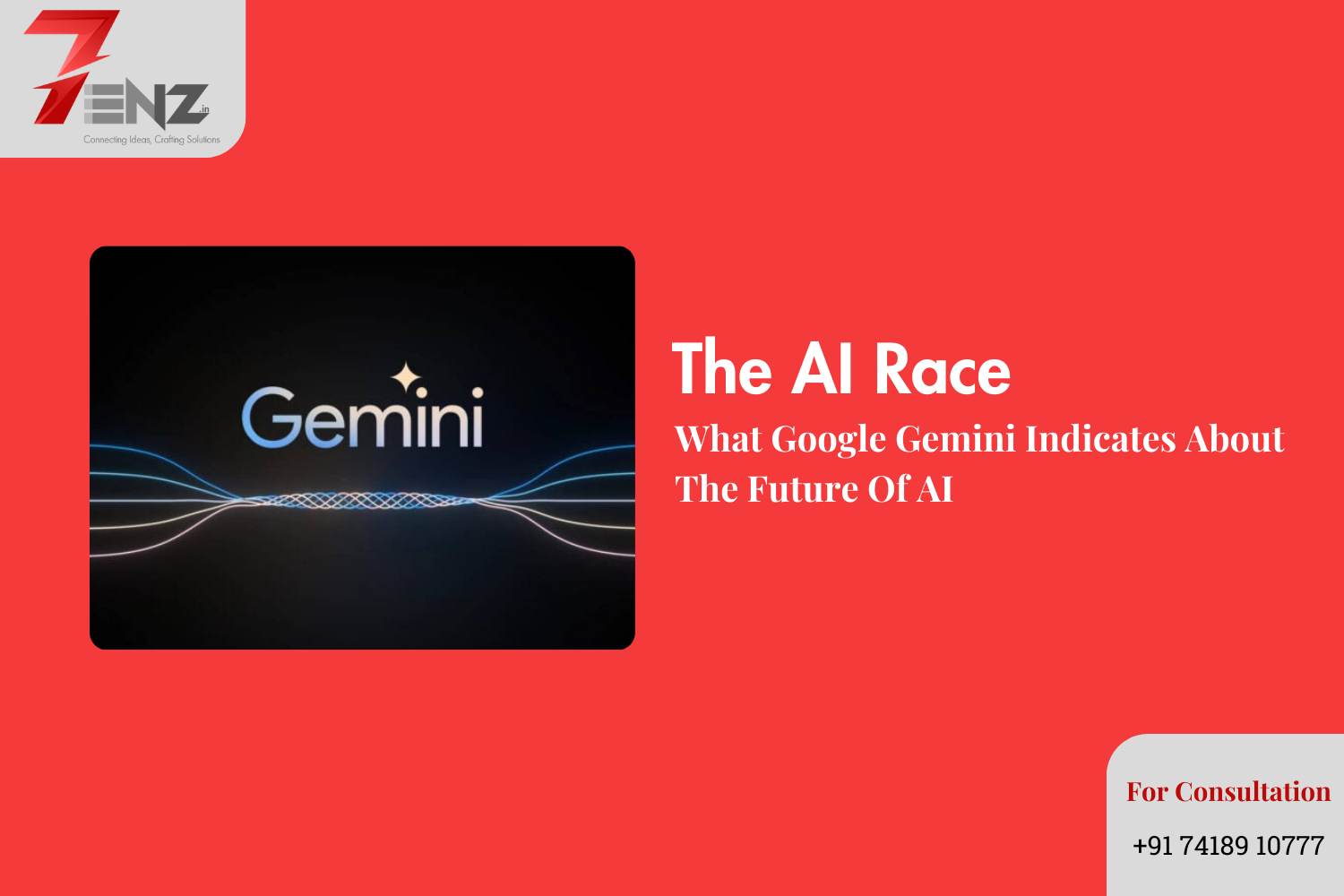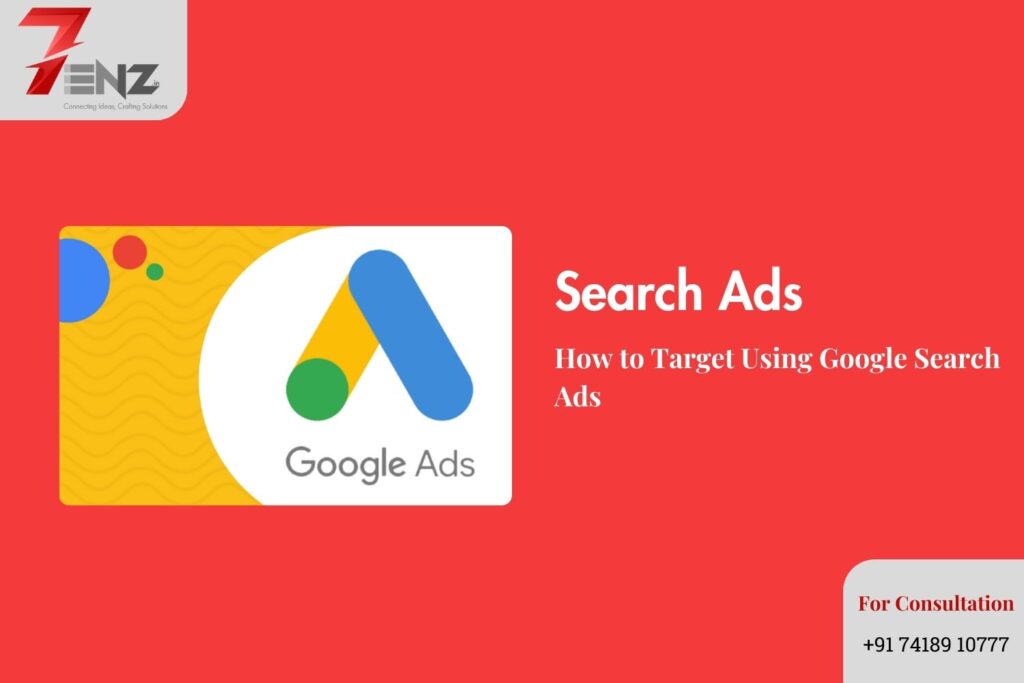
What Google Gemini Indicates About The Future Of AI?
The newest star in the AI space is Google’s Gemini. Sundar Pichai, the CEO of Google, referred to Gemini as their “most capable and general model yet, with state-of-the-art performance across many leading benchmarks” in a recent blog post. The CEO and co-founder of Google DeepMind, Demis Hassabis, claims that Gemini has the ability to “generalize and seamlessly understand, operate across, and combine different types of information, including text, code, audio, image, and video.” Gemini (7enz Robotics )
Even if these are grandiose assertions, viewing the demonstration films indicates that Google is moving toward authoritatively verifying them.
Here’s our analysis of the most recent advancements and our thoughts on what they could mean for AI going forward.
Gemini’s Numerous Faces : Three Templates for Various Purposes
Three primary Gemini variants are included in the release: Ultra, Pro, and Nano. Every one has its own capabilities and use case. Pro is meant for everyday use, Nano is designed for mobile devices like the Pixel 8 Pro, and Ultra is a large-scale model for more difficult operations.
It appears that Google is introducing its idea of a single account for all platforms and devices to the AI space. This envisions a future in which the application of AI is broad and not just confined to research facilities or working professionals. Since models like Gemini Nano are designed for specific use cases, organizations and businesses will find it easier to integrate AI capabilities into their apps without sacrificing performance, according to GeekyAnts CTO Saurabh Sahu.
Gemini (7enz Robotics
Gemini’s Real-World Usability and Broad Application Set.
In five crucial areas, Gemini has demonstrated outstanding capabilities in a variety of use cases:
- Multimodal communication
- Being multilingual
- Making of Games
- Visual Conundrums
- Creating Links
For example, Gemini can explain the significance of pace and read time signatures on sheet music. Consider the effects on sharing knowledge and learning. Communication gaps will decrease when complex equations become simpler to understand. By combining this with multilingual text translations, a new global norm for collaboration will be established.Gemini (7enz Robotics )
Five application scenarios are listed in Google’s official announcements for this technology. They are listed in the following order:
- Being the best in competitive programming
- Gaining understanding from the scientific literature
- Recognizing the entire raw audio signal
- Elucidating mathematical and physical reasoning
- Analyzing user intent to provide a customized experience
- Future upgrades will probably cause the list to expand.
Methodical From Concept to Code, Gemini
Gemini starts the process by assessing the general requirements, concentrating on the bigger picture before going into specifics and moving from data to coding. Priyamvada, a software engineer at GeekyAnts who oversees multiple projects involving generative AI and AI models, offers her initial thoughts:
Gemini’s inner workings are incredibly systematic. It first asks whether a user interface is really necessary, and if it is, it next assesses whether a text-based prompt would be the best course of action. Gemini assesses the request’s complexity, taking into account whether it necessitates the organized presentation of significant data. After that, it evaluates its comprehension and, if needed, poses more queries to get more details.
This procedure helps Gemini identify any remaining doubts and determine whether it has received enough information to proceed. After that, Gemini creates a Product Requirement Document (PRD) that describes the desired features. Taking into account that customers might wish to peruse alternatives and look into specifics, the PRD acts as a guide when creating the best possible user experience. As a result, a list and a meticulous layout are produced. After that, Gemini uses Flutter to construct the interface, adding widgets and features.
In the end, it collects the information required to make this experience possible, enabling users to communicate and look for further details. The end product is a visually appealing UI with step-by-step instructions and dropdown menus.
Gemini’s built-in multimodal capabilities enable it to process audio signals quickly and effectively from beginning to conclusion. It makes a distinction between different ways to pronounce the same words. Gemini’s natural integration of textual, visual, and aural features allows it to understand and combine different modalities in an efficient manner. Imagine more accurate command translation into many formats on phones and larger screens.
Benchmarks Using SOTA Metrics and ChatGPT Are Lookin’ Good
The benchmark findings for Gemini are encouraging; it outperforms state-of-the-art (SOTA) performance in multimodal tasks and leads in some aspects.
But on December 13, when Google makes Gemini Pro available through the Gemini API, the real test of Gemini will start. Google Cloud Vertex AI or Google AI Studio can be used to access it. Gemini Nano will also be available to Android developers. Gemini will be used by Bard and Search Generative Experiences (SGE) as well. SGE response times appear to be decreasing already, according to reports.
Gemini Pro is now accessible within Bard. Users of Pixel 8 can also use WhatsApp to access a version of their AI-suggested text responses. In the future, Google intends to release it on Gboard. Using this capability, businesses can create chatbots for their staff or audience to offer an engaging experience that prioritizes and minimizes manual input.
Real-time user feedback allows us to evaluate Gemini’s capabilities over a wider range of applications. Whether the results will be spectacular or whether there will be revolutionary changes is still unknown. But one thing is for sure: Gemini will change how models interact with different devices.
As soon as the upgrades settle, we can’t wait to use this in projects for our clients. The Nano engine opens up many possibilities because it is natively designed for mobile devices. Priyamvada continues, “We can also use the technical reports to determine which model to deploy for various use cases.
Final Thoughts: The AI Race’s Future
The lead is not very great, but the benchmark statistics appear good. Furthermore, ChatGPT has endured, and processes reliant on ChatGPT 4.0 are now commonplace in many enterprises. To switch, the value proposition advantage must be very strong.
Ultimately, the biggest concern when introducing any new AI models will be safety. Google claims that in order to make Gemini safer and more inclusive, it was constructed “responsibly from the start, incorporating safeguards and working together with partners.” It’s a friendly greeting.
To sum up, Gemini has paved the way for a potential sequel to the Space Race of the 20th century. In terms of pure user count, ChatGPT currently holds a dominant position. Its training system reportedly receives input from 180.5 million people. In terms of pure numbers, Gemini has to pull off a Usain Bolt sprint to catch up.Gemini (7enz Robotics )
The world stands to benefit much from the AI race, given that models are developed and applied appropriately. We might finally live in a world where communication, knowledge, and language boundaries are not major obstacles when developing apps. The opportunities appear bright.Gemini (7enz Robotics )



